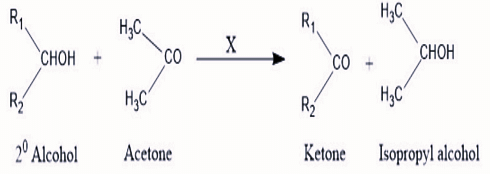Question:
Which of the following are neutral?
Which of the following are neutral?
Show Hint
Ionic compounds generally form when there is a large difference in electronegativity between the elements involved, leading to charge separation. A neutral molecule would have a balanced charge.
Updated On: Apr 28, 2025
- KF
- KBr
- NaCl
- Na(NO_3)_2
Hide Solution
Verified By Collegedunia
The Correct Option is C
Solution and Explanation
To identify which compounds are neutral, we need to understand that a neutral compound is one where the cation and anion do not have any significant charge interaction that would make the compound ionic or polar.
- \( \text{KF} \): \( \text{K}^+ \) and \( \text{F}^- \) — both ions, thus ionic.
- \( \text{KBr} \): \( \text{K}^+ \) and \( \text{Br}^- \) — both ions, thus ionic.
- \( \text{NaCl} \): \( \text{Na}^+ \) and \( \text{Cl}^- \) — both ions, hence neutral (ionic compound, but stable).
- \( \text{Na(NO}_3)_2 \): Contains an ionic nature and extra negative charge from nitrate ions, thus ionic. Hence, \( \text{NaCl} \) is the neutral compound, making the correct answer \( \text{NaCl} \).
- \( \text{KF} \): \( \text{K}^+ \) and \( \text{F}^- \) — both ions, thus ionic.
- \( \text{KBr} \): \( \text{K}^+ \) and \( \text{Br}^- \) — both ions, thus ionic.
- \( \text{NaCl} \): \( \text{Na}^+ \) and \( \text{Cl}^- \) — both ions, hence neutral (ionic compound, but stable).
- \( \text{Na(NO}_3)_2 \): Contains an ionic nature and extra negative charge from nitrate ions, thus ionic. Hence, \( \text{NaCl} \) is the neutral compound, making the correct answer \( \text{NaCl} \).
Was this answer helpful?
0
0
Top Questions on carbonyl compounds
- Acetone can be converted to 2-methylpropan-2-ol using:
- KEAM - 2025
- Chemistry
- carbonyl compounds
- The correct stability order of carbocations is
- JEE Main - 2024
- Chemistry
- carbonyl compounds
- According to Oppenauer Oxidation reaction, oxidation of secondary alcohol to ketone by reagent (X) in acetone takes place, what is "X" :

- GPAT - 2024
- Organic Chemistry
- carbonyl compounds
- The Gattermann-Koch reaction is used in the industrial preparation of benzaldehyde. The electrophile involved in this reaction is
- CUET (UG) - 2024
- Chemistry
- carbonyl compounds
- In the following compounds, what is the increasing order of their reactivity towards nucleophilic addition reactions?
- CUET (UG) - 2024
- Chemistry
- carbonyl compounds
View More Questions
Questions Asked in KEAM exam
- A lift having mass 1000kg moves upward against a frictional force of 2000N. Power given by motor is 36000W. What is the velocity of the lift?
- KEAM - 2025
- Speed, Time and Distance
- Solve for \( a \) and \( b \) given the equations: \[ \sin x + \sin y = a, \quad \cos x + \cos y = b, \quad x + y = \frac{2\pi}{3} \]
- KEAM - 2025
- Trigonometry
- If \( A \) is a \( 3 \times 3 \) matrix and \( |B| = 3|A| \) and \( |A| = 5 \), then find \( \left| \frac{\text{adj} B}{|A|} \right| \).
- KEAM - 2025
- Matrix Operations
- An unbiased die is tossed until a sum \( S \) is obtained. If \( X \) denotes the number of times tossed, find the ratio \( \frac{P(X = 2)}{P(X = 5)} \).
- KEAM - 2025
- Probability
- If $ f(x) = \log 3 - \sin x $, $ y = f(f(x)) $, find $ y(0) $.
- KEAM - 2025
- Functions
View More Questions